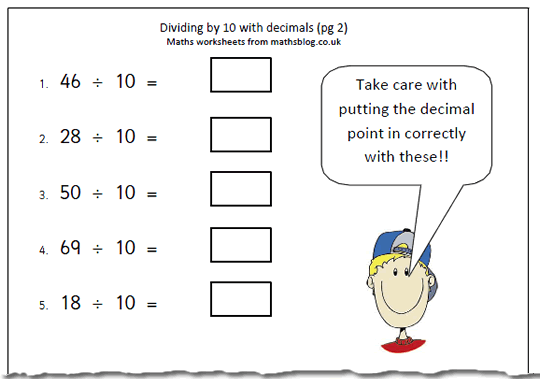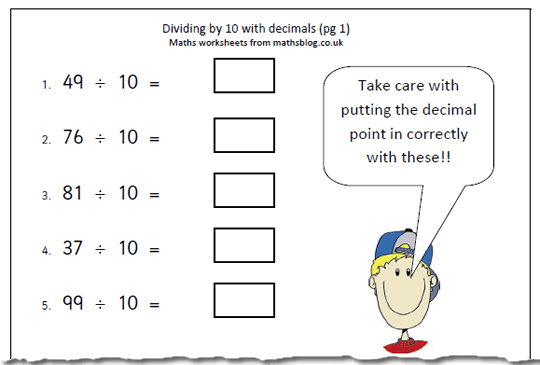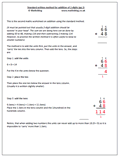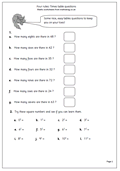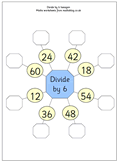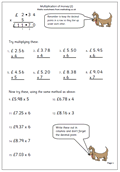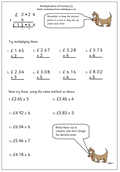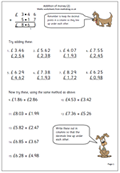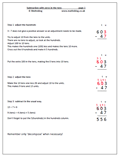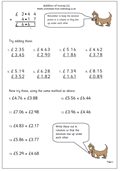This is the second in our series of dividing by 10 with decimals. These should all be completed mentally as all it involves is moving each digit one place to the right and ensuring that a decimal point is placed between the units and tenths.
The key to success here is to understand place value and that moving digits one place to the left makes them ten times bigger and one place to the left, ten times smaller. The decimal point remains in the same place, but is not usually shown if the number is whole. This also highlights the relationship between multiplication and division. If children have been told to ‘add a nought’ when multiplying by ten there is a whole lot of unlearning to do when it comes to dividing by ten, so adding a nought is definitely not a good idea!!
